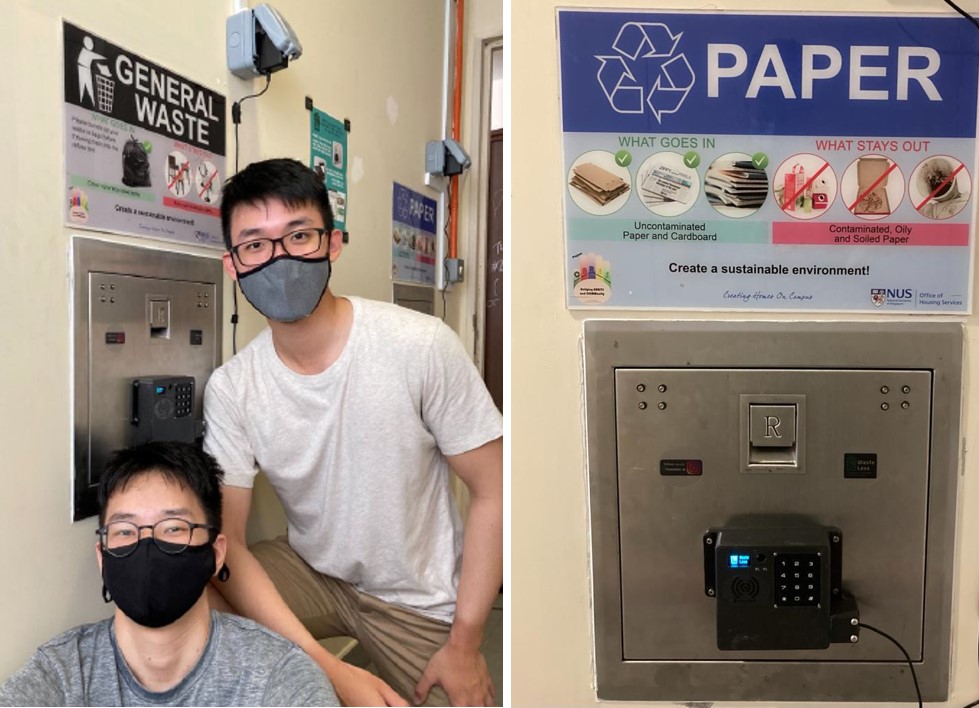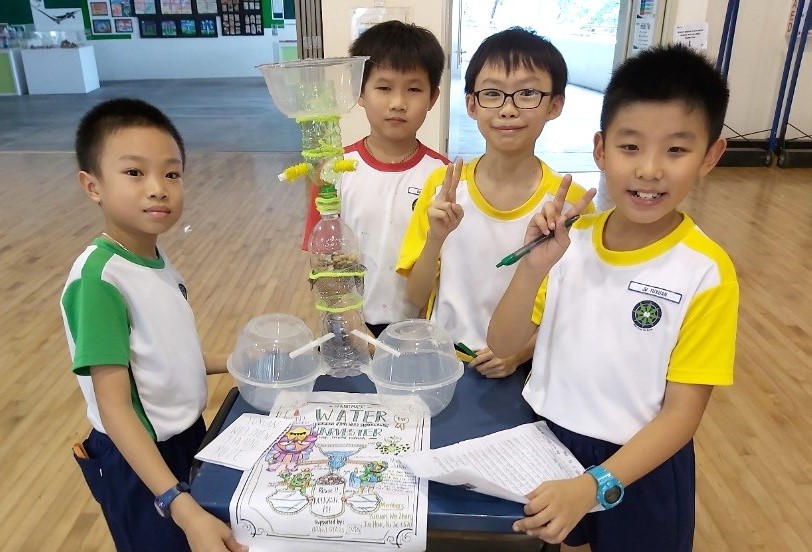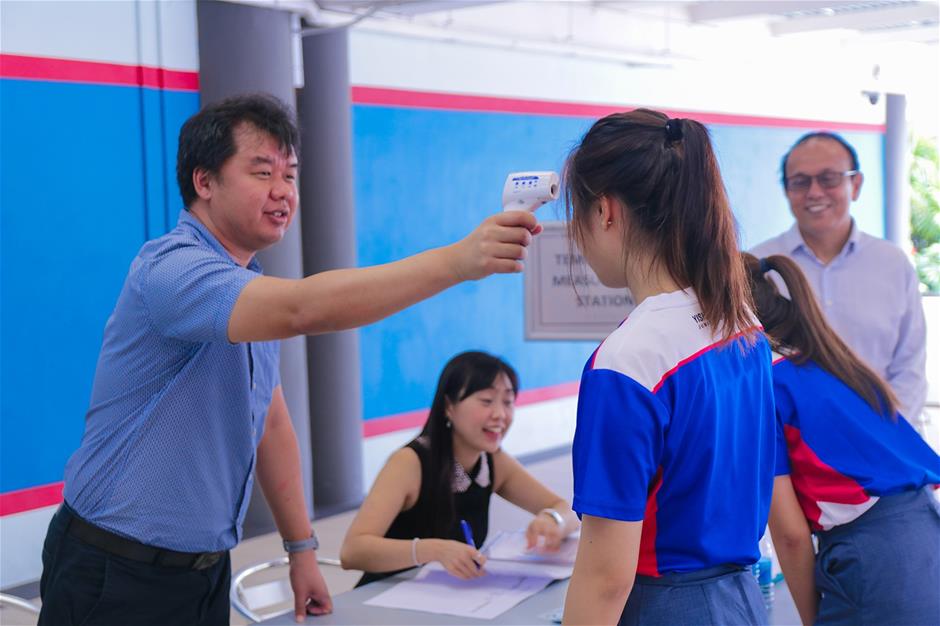“Can I order one rubbish chute? Yes, that’s right, just one.”
Twenty-year-old Christopher Li could partly understand the confusion from the construction contractor at the other end of the line. After all, who goes shopping for a single rubbish chute?
And no, Christopher was not renovating his house but conducting an experiment. Along with a group of friends, he was trying to build a smart chute system that could track the amount of rubbish and recyclables deposited by individuals.
Their goal? To encourage waste reduction by providing people with data on how much they were throwing away or recycling at home.
Not a school project
The team first came together in May last year, when COVID-19 overturned their plans to travel before the start of their undergraduate studies.
Anthony Sukotjo rounded up three friends from his secondary school, Anglo-Chinese School (Independent), to take part in a hackathon on environmental sustainability organised by Nanyang Technological University (NTU). The original team included Samuel Yeo, who was then still in National Service, Pradeep Mani Rathnam and Neo Yew Chong. Christopher, and a few others, would join a bit later.
“Since we couldn’t travel and were assigned remote learning, we wanted to do something useful with our time,” Anthony shared. “This was a good way to learn something new, too.”
For the hackathon, the team came up with an idea to tackle the issue of household waste. Their WasteLess Smart Chute comprised a set of three chutes for general waste and paper and plastic recyclables. Each time a resident throws something into the chutes, it would be weighed automatically. Paired with a mobile app, this allows people to see how much rubbish and recyclables they are depositing over time, and receive prompts on ways to reduce their waste generation, such as by reusing or recycling. The data collected could also help inform waste management policies.
“We were partly inspired by apps like Health 365, which make people more conscious about their daily habits,” explained Anthony. “Currently, people can check how much water and electricity they are using, but there’s a gap when it comes to waste. We wanted to remedy that.”
Although the team did not win, their idea caught the attention of one of the judges, who leads the National University of Singapore (NUS)’s Waste Minimisation and Recycling Taskforce. His enthusiasm for the idea convinced the team to take their project forward after the competition.
“We asked ourselves if we could make our idea work,” shared Yew Chong, currently a first-year Accountancy student in SMU. “We believed this was worth doing, so we reached out to the NUS staff member and asked if we could test our idea in NUS.”
A few emails and meetings later, the team got the go-ahead from the NUS administration to pilot their smart chute system in one of the floors in NUS’ Tembusu Residential College.
It takes many skills to solve a problem
Making a working prototype of the smart chute system and mobile application was not easy, but the team saw the project as an opportunity to apply what they had learnt in school to a real problem, and also pick up new skills that they may lack.
Anthony and Pradeep, as Computer Science undergraduates, naturally took on the task of developing the mobile application.
“We had picked up the basics of coding and robotics in our electives in secondary school,” explained Anthony. “However, a lot of our skills were self-taught – or there’s always trial and error!”
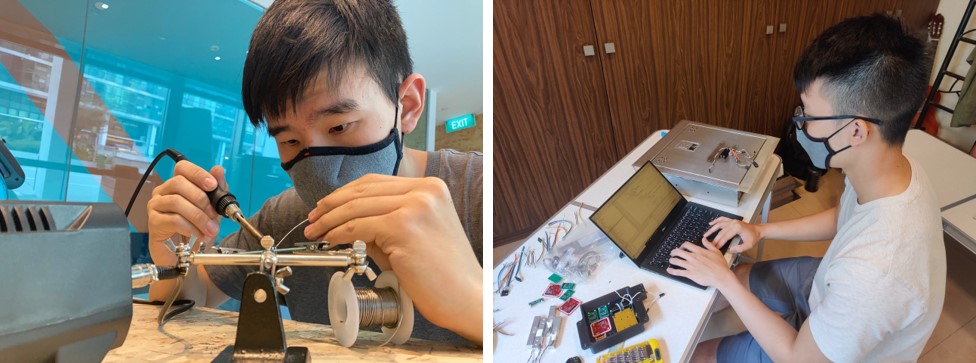
Christopher (left) modifying the chute to include a weight sensor and Samuel (right) linking it up to the mobile application
Yew Chong was not so much into the technology, but he contributed by researching behavioural economics – a personal interest of his. He suggested ways to make their product more attractive and user-friendly. For example, he wanted to see if adding a leaderboard, where users could compare their waste trends to that of their neighbours would encourage them to recycle more. Yew Chong also represented the team when it came to liaising with external partners, and (perhaps most importantly) helped secure funding for the pilot project from South West Community Development Council.
As a medical student at Nanyang Technological University (NTU), Samuel’s knowledge was not directly applicable, but he helped the others with parts of the coding and the hardware. He also found himself doing much of the project management – that meant keeping track of everyone’s progress, planning the next steps and reminding the team of their goals.
The team also recruited a few more friends once they knew this was going to be a long-term project.
Christopher, who planned to study Engineering abroad, was one of them. He focused on the hardware – and was the one who successfully procured the chutes for the experiment.
Four other students, Darren Hoon, Raphael Joseph and Jie Wen from NUS, and Tan Qi En from SMU also contributed to managing the operations during the pilot.
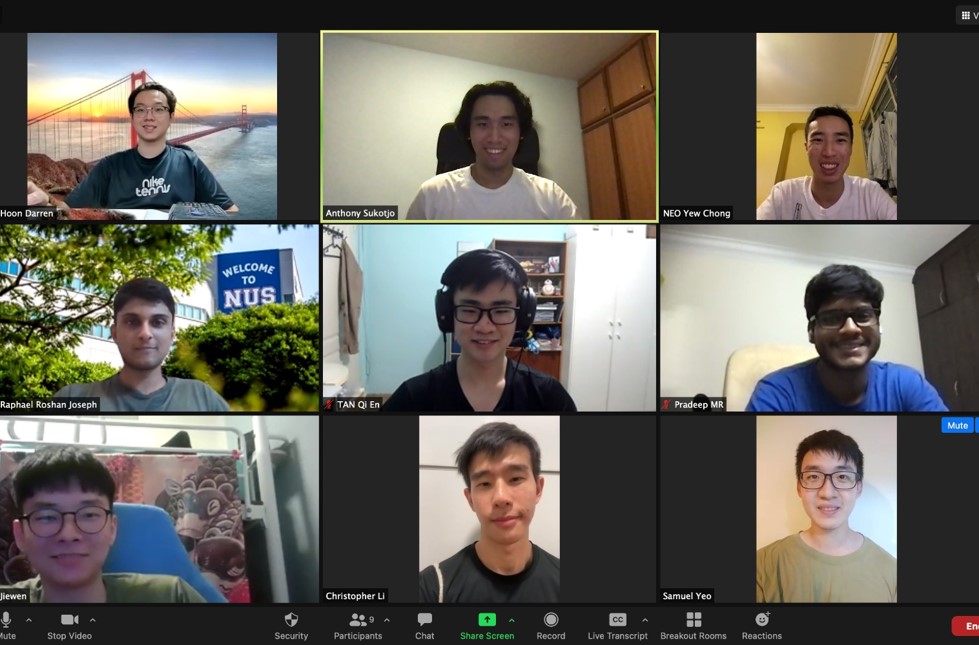
From the original four members, the WasteLess team expanded to nine and comprised students from NUS, NTU, SMU and three overseas colleges.
The real test
In January this year, the team was finally ready to test their smart chute system. They carried out an engagement session for the residents in NUS’ Tembusu Residential College involved in the pilot and were glad to find that most of the residents were enthusiastic.
However, things are always a bit more messy outside the textbook.
“On paper everything looked good,” Christopher laughed as he recounted the event. “But we hit a roadblock on the very day we were supposed to install the chutes – the hole (in the wall) was too small! We had to readjust and go back another day to install it.”
Despite the hiccups, the team kicked off the project, which would run from February to April this year.
Said Samuel, “The pilot shows us that it is possible for individuals to track how much waste they produce and this can be used to measure the effectiveness of future interventions.”
The team is already planning for a second trial later in the year after they tweak the current design of the chute and mobile application. For instance, the weighing scale in the chute sometimes may not register small and light items, and they are looking to fix that.
However, in general, the smart chute system and mobile application are working as they are meant to and the team is optimistic that with the support of the NUS administration, they would eventually be able to see their idea implemented in high-rise residences campus-wide.
With COVID-19 restrictions progressively easing this year, some of the team members have plans to travel to their respective overseas colleges for their studies. But they intend to continue contributing to the WasteLess effort.
“Some of the work, such as the coding aspect, can be done remotely,” Anthony explained. “We are also used to it since the whole project was born during COVID times after all!”
Said Yew Chong about persevering with the project, “We have the idea and the skills, and NUS has given us the platform to test them out – it’s our chance to prove ourselves and make it work.”
Read more about student-led environment initiatives in our IHLs in Getting Students to Recycle Right and Earth-friendly Freebies



